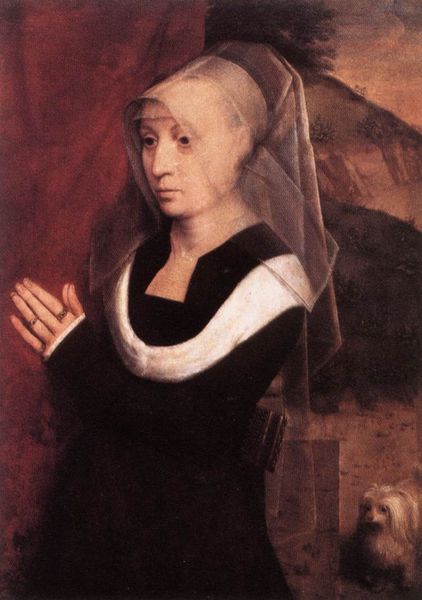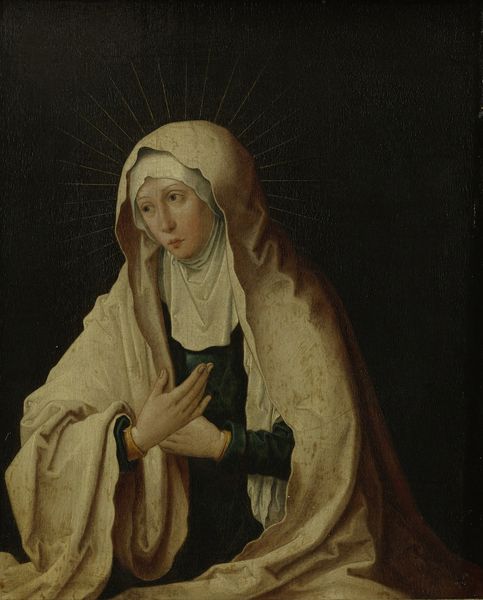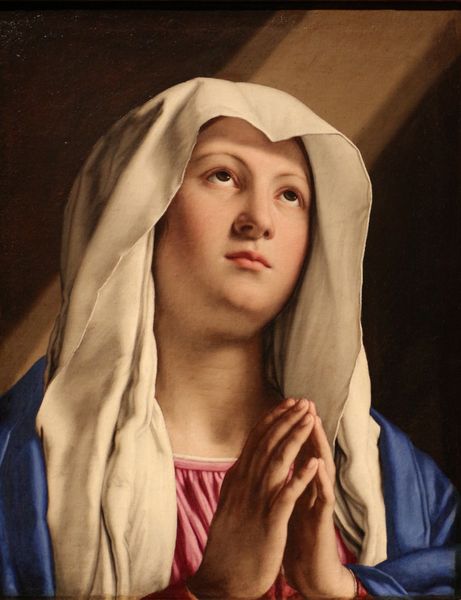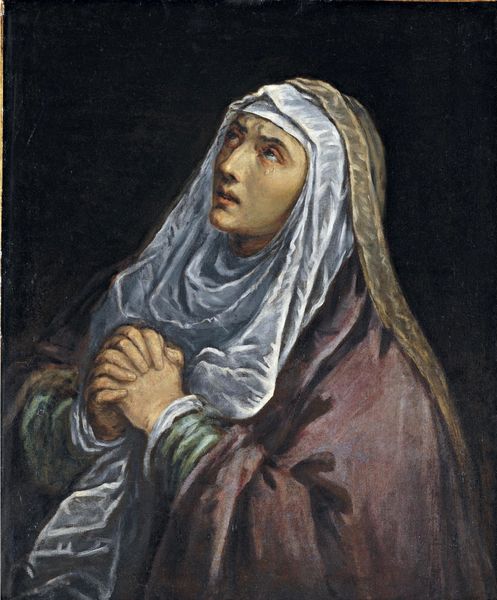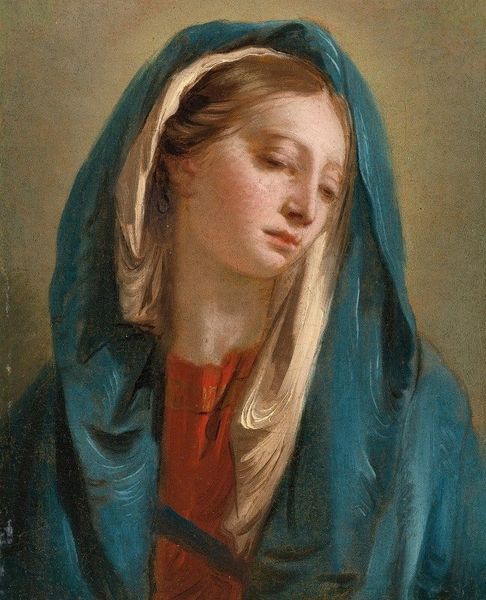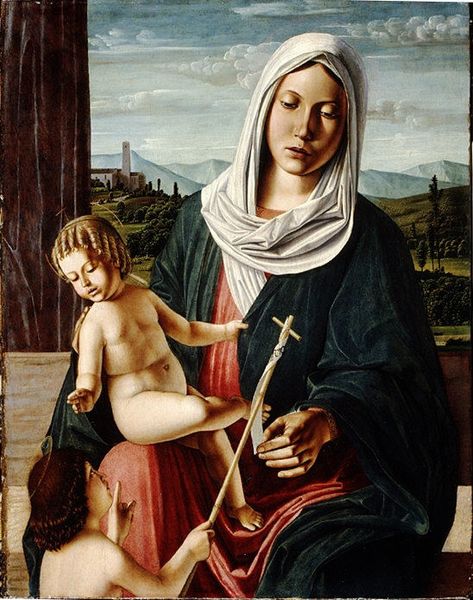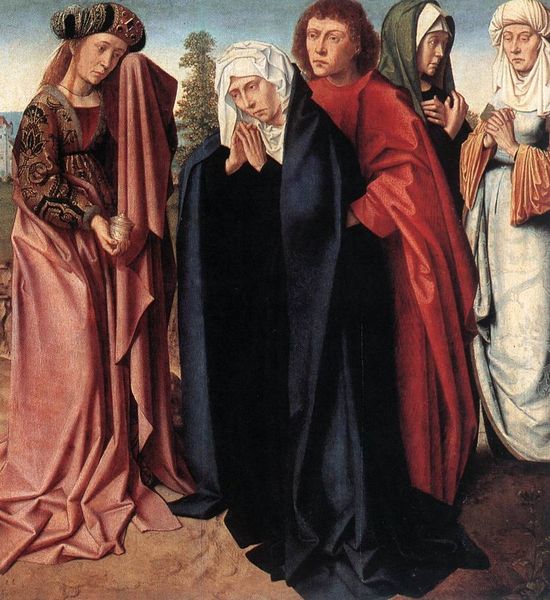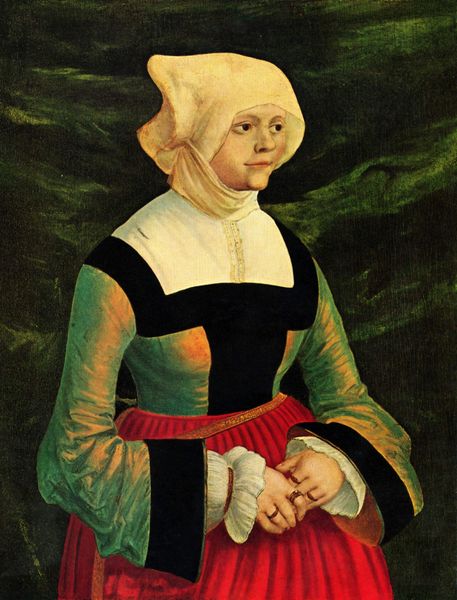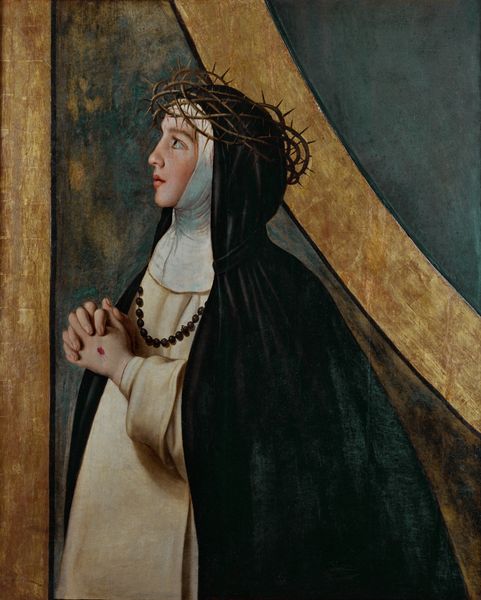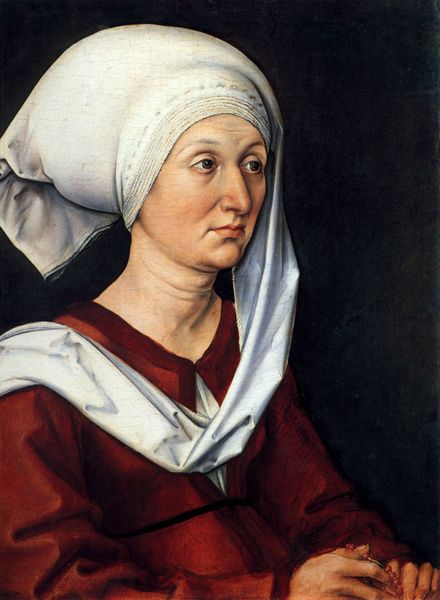
panel, painting, oil-paint
#
panel
#
narrative-art
#
painting
#
oil-paint
#
figuration
#
history-painting
#
northern-renaissance
#
early-renaissance
Copyright: Public domain
Editor: Here we have a detail from Geertgen tot Sint Jans’s “Lamentation of Christ,” painted around 1484 in oil on panel. The grief is palpable; these aren’t idealized figures, and you can really feel the weight of their sorrow. How do you see this painting fitting into the visual culture of its time? Curator: The 'Lamentation' emerges from a period intensely shaped by religious and social structures. The Northern Renaissance, unlike its Italian counterpart, often served a deeply personal piety. How do you see the scale and the accessibility of panel paintings like these influencing religious experiences compared to, say, grand church frescoes? Editor: That's interesting! The intimacy definitely comes through. I guess I never thought about how accessible these smaller works would have been. So, its creation and display...how would it have changed religious practices, or at least personal devotion? Curator: Exactly. These panels fostered a more private engagement. Unlike the communal experience of large church art, smaller works allowed personal contemplation. Think about who could afford art and what these scenes reinforce in social narratives of the period. Did these depictions empower empathy or endorse specific social roles within the spiritual narrative? Editor: It’s powerful to consider how art shapes, and is shaped by, belief and class structures. Looking at how it personalizes devotion changes how I view this piece. Curator: Precisely. Understanding the historical dialogue allows us to see not only the grief, but also the complex social and religious roles that determined how grief was portrayed and consumed.
Comments
No comments
Be the first to comment and join the conversation on the ultimate creative platform.
